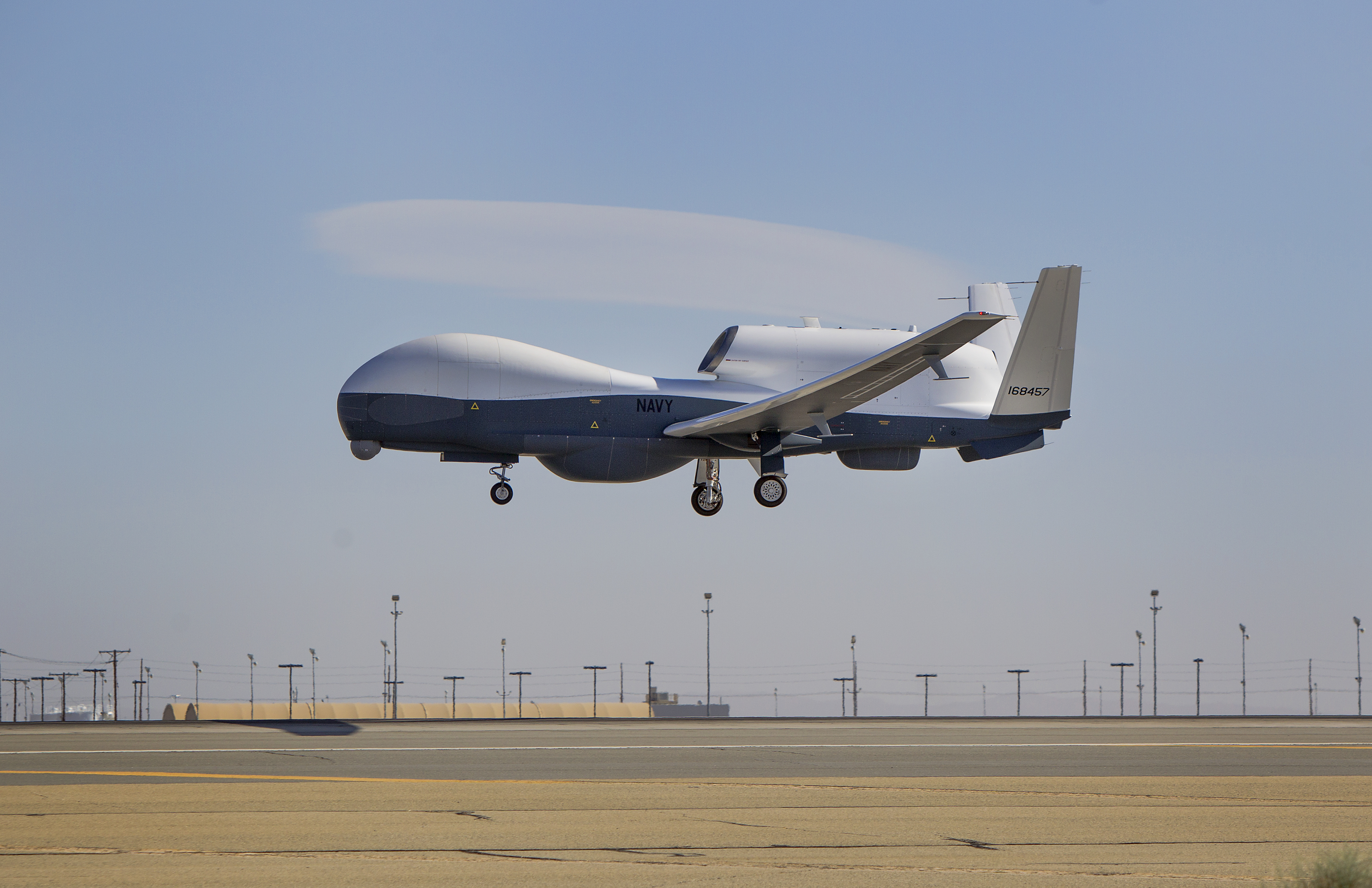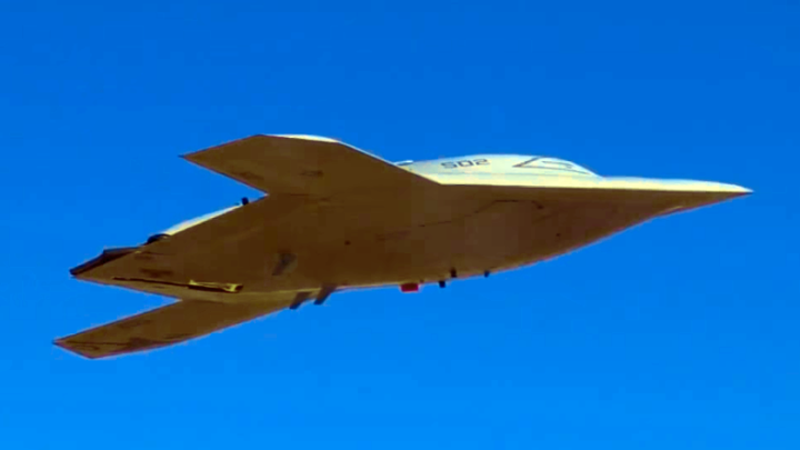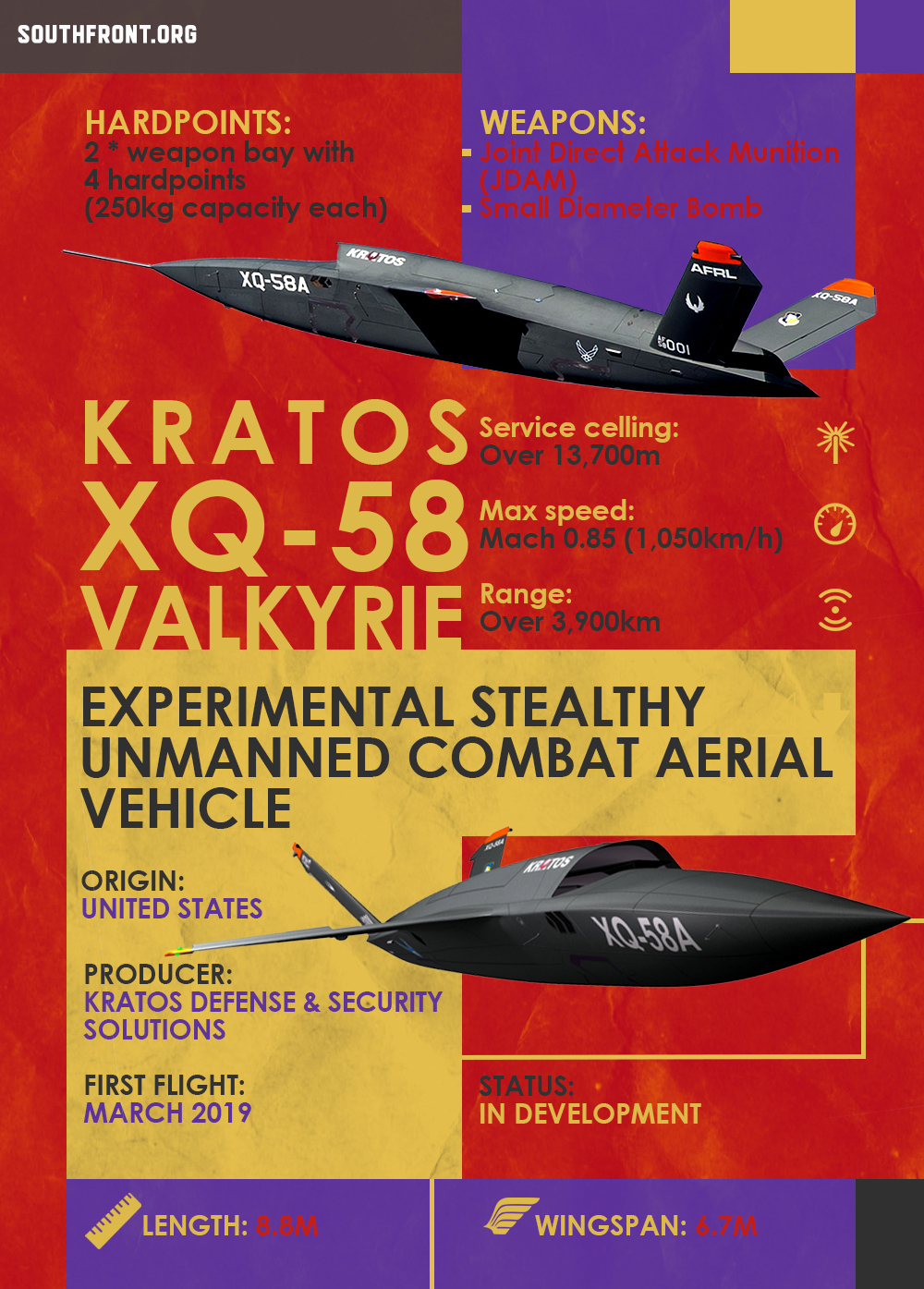Written by Doctor of Technical Science A. Stepanov. Originally appeared at Foreign Military Review 2021 #1, translated exclusively for SouthFront.
The United States, Peoples Republic of China, the United Kingdom, France, Israel, India and a number of other states are implementing national military programs that include the artificial intelligence (AI) application both in battlefield control systems and in a multitude of weapons and military equipment. In the expanded case it means the capability of an artificially created object, for example a digital computing system, to learn to solve a certain class of problem that is typically considered needing creative and/or analytical skills, as well as a heavily formalized capability in a limited set of decision functionality. Previously, the solutions for such problems were exclusively a human prerogative.
DEAR FRIENDS. IF YOU LIKE THIS TYPE OF CONTENT, SUPPORT SOUTHFRONT WORK:
PayPal: southfront@internet.ru
Donation alerts: https://donationalerts.com/r/southfront
Gumroad: https://gumroad.com/southfront
Or via: http://southfront.org/donate/ or via: https://www.patreon.com/southfront,
BTC: 3Gbs4rjcVUtQd8p3CiFUCxPLZwRqurezRZ,
BCH ABC: qpf2cphc5dkuclkqur7lhj2yuqq9pk3hmukle77vhq,
ETH: 0x9f4cda013e354b8fc285bf4b9a60460cee7f7ea9
The US Government Congressional Research Service Report ‘Artificial Intelligence and National Security’ (AINS) dated on 21, November 2019, argues that the main reason for AI integration into various military systems is the need to promptly process prodigious amounts of structured and unstructured information (the so-called big data), due to the constant expansion in number, range and functionality of modern means of information gathering. This information can be presented in various forms, including photo, video and radar images, as well as audio and text messages in various languages, data obtained from cyberspace, etc. The research also notes that in the near future AI will be integrated in all types of combat activities and logistics.
According to the American company Markets and Markets Research, the annual growth of the world AI systems and tools market until 2025 will by about 14.75 percent. The United States has an essential role to play in this process, and key hardware and software manufacturers will be the American companies: Lockheed Martin, Raytheon, Northrop Grumman, IBM, General Dynamics, NVIDIA, the British company BAE Systems and the French company Thales. At the same time, according to the New Generation Artificial Intelligence Development Plan (adopted in 2017), by 2030, the People’s Republic of China should become a global leader in AI technology, including systems used in weapons and military equipment.
The main way to implement technologies that are currently widely used in creation of military AI systems is an Artificial Neural Network (ANN). The ANN is a set of individual digital computer elements – neurons that are usually located on several sequential layers of the network. The ANN is not programmed in the common sense, but it learns. This cognitive capability represents the ANN’s primary advantage over traditional computing algorithms. In the process of learning, the neural network is able to identify complex dependencies between input and output data, as well as formulate a synthesis. The military AI system is able to obtain a successful result based on data that was absent in the training set, is incomplete and/or “noisy”, or even partially damaged.
Publications in different countries list a wide range of tasks for their Armed Forces, the effective solution of which requires use of AI systems. It is determined that AI systems would be most useful for reconnaissance, as well as for object identification during the processing of video- and photographic materials obtained from the image intelligence (IMINT) assets.
The AI reconnaissance learning process would consist of a large array of specific images of the required reconnaissance objects (for example, aircraft, ships, various types of weapons, individuals, etc.), taken at different angles, lighting and in different environments, are fed to the neural network. The ANN analyzes the specific features of these images (lines, their connections, shapes, color, size, etc.) and constructs a recognition model that provides identification of objects with the minimum acceptable level of errors of the first or second kind. In leading AI development countries, there are already pieces of armament that implement the described capabilities of AI.
For example, in early 2020, the Raytheon Company announced the deployment of the Intelligence Surveillance Target Acquisition and Reconnaissance (ISTAR) system on the Sentinel aircraft of the British Air Force.
This system is equipped with AI and provides:
- detection of ground and maritime objects and requisite tracking;
- mapping of controlled areas;
- operational real-time assessment of the situation by the of tracking of various objects’ activity.
For example, the MQ-4C Triton drone that is provided with reconnaissance, surveillance and designation systems, and is in service with the US Navy, has such capabilities.
Among other tasks assigned to AI systems, there is determination of the detected radio signal(s) and radio frequency emitter during electronic reconnaissance, recognition and translation of multilingual speech in unfavorable acoustic conditions, gathering of geo-spatial information from disparate unstructured geo-data, assessment of characteristics and purpose of various objects based on the results of their observation, processing of two-dimensional images in order to obtain three-dimensional ones.

PALMDALE, Calif. (May 22, 2013) The Triton unmanned aircraft system completes its first flight May 22, 2013 from the Northrop Grumman manufacturing facility in Palmdale, Calif. The 80-minute flight successfully demonstrated control systems that allow Triton to operate autonomously. Triton is designed to fly surveillance missions up to 24-hours at altitudes of more than 10 miles, allowing coverage out to 2,000 nautical miles. The system’s advanced suite of sensors can detect and automatically classify different types of ships. (U.S. Navy photo courtesy of Northrop Grumman photo by Alex Evers/Released)
Under the BLADE program (Behavioral Learning for Adaptive Electronic Warfare System), carried out for the Pentagon Defense Advanced Research Project Agency (DARPA), Lockheed Martin is developing an electronic warfare system designed to automatically suppress enemy radio capabilities via continuous assessment of its RF suppression effectiveness in order to overcome possible countermeasures. It is argued that AI plays a pivotal role in ensuring the effectiveness of this system.
Cyberspace is another important scope for the military implementation of ANN. The AINS states that AI is a core component in maintaining the most complex cyber operations. Its algorithms, implemented in an ANN, can automatically detect the threats, assess the danger, and modify its own software to protect against them. According to DARPA specialists, the execution of all these operations is up to several seconds, and not months, as it takes in case when a large staff of experts in the relevant fields of computer knowledge is involved. Potentially AI-powered cyber systems are capable of simultaneously solving cyber defense and attack tasks. Chinese corporation “Tencent” has successfully conducted experiments that were aimed at gaining unauthorized access to ANNs that identify various objects. The purpose of such access was to hide or replace these objects. Aiming to protect against such a harmful effect on the neural network, DARPA has special “GARD” programs (Guaranteeing AI Robustness against Deception) for the development of software that ensures the guaranteed stability of AI systems to hacking attempts. Cyber security experts suggest to use encryption methods for codes executed in ANN programs to protect against cyber-attacks.
AI systems are also widely applied in information operations. They are currently capable of creating artificial photos, audio and video content. By embedding real elements of environment and persons, they create accounts of fictional or real people with a retrospective of their family relations, education, career, contacts, and credit status and so on. Such technologies can be used to: create so-called ‘fake news’ in the media, legends for special agents, discredit or blackmail individuals. DARPA’s MediFor (Media Forensics) project is known to counter such systems; it is aimed at revealing and documenting the facts of their use. At the same time, AI means of creating false information are also able to learn countering the means of their detection.
There is another important direction in the development of military AI systems, and it is central planning and coordination of military operations of various scales in the air, outer space, cyberspace, ocean space and on the ground. Such actions are called Multi-Domains Command and Control (MDC). The collecting and processing of all available information received from various sources allows creating an integrated source of information, the so-called global operational sight. According to MDC, commanders at various echelons will be automatically provided with the most effective options for achieving the goals of the operation. Such systems are in development by Lockheed Martin and Harris Corporation in the interests of the US Air Force. It bears mentioning that various automated decision support systems and computational modeling of the operational environment have been widely used since the 70s in the armed forces of developed countries, but these systems were not able to learn and were not provided with AI.
Simulators used to train machine operators were one of the first military AI tools used in practice. The simulation is aimed at replicating the real conditions of a combat situation, for example, by generating appropriate video and audio content to be loaded onto information display devices in the process of training and by changing these conditions in response to soldier reactions.
Currently, AI is most widely spread in military logistics of the US Armed Forces. Such systems are already being used to assess potential needs of spare parts, to determine the most efficient delivery methods. Their mode of operation consists in the automatic analysis of technical parameters obtained from various sensors placed in weapons in order to determine the need and volume of maintenance or repair of military equipment. American military experts note that military logistic AI systems provide a more efficient organization of operations in terms of: number of filled requests / the cost of logistical operation / the duration of their implementation.
AI technologies are widely used in autonomous combat and support mobile devices capable of acting independently and continuing to fulfill a task (or return to position set point) in case of separation from contact with the control center. Unmanned aerial vehicles (UAVs), autonomous ground vehicles, surface and underwater devices of various profiles are prominent examples of such equipment. This area of AI application is well elaborated theoretically and practically due to the vast experience in the use of such systems with civilian purposes. In the military field, for example, AI controlled unmanned F-16 fighters are in service with the US Air Force.
The XQ-58 Valkyrie, developed by the American company Kratos Defense & Security Solutions, is an example of a modern strike UAV. Relatively successful tests of this UAV, proposed as a “partner” of a man-controlled fighter, were carried out in 2019-2020.
In the US Navy, autonomous AI systems are being evaluated for anti-submarine and anti-sabotage defense efficiency, to control the water area adjacent to important coastal infrastructure facilities, and deliver necessary equipment to mobile and stationary marine facilities.
Large-draught unmanned underwater vehicles like the LDUUV (Large Displacement Unmanned Underwater Vehicle) with endurance of at least 70 days, capable of independently completing navigation tasks, bypass various obstacles and identify underwater and surface targets, are being drawn up.
A promising trend for further improvement of autonomous transport and combat vehicles is ensuring of their automatic group interaction. Thus, DARPA implements projects for group use for UAVs (up to several hundred in one group), autonomous surface and underwater vehicles, ground mobile robotized platforms of various profiles. The following parameters are implemented on autonomous vehicles for effective means of group use:
- to determine the unique features of the environment, as well as identify other members of the group;
- to automatically establish communication lines and appoint the group leader or choose a new one if the previous one is lost;
- to cooperate in order to complete the task.
According to the statements by the Spokespersons of the Ministry of Defense of the People’s Republic of China, in autumn 2020, for the first time ever, China successfully tested the simultaneous use of 200 interacting UAVs aimed at finding and destroying ground targets.
In addition to previously mentioned systems, AI may be applied in the following military fields:
- anti-missile and air defense systems that use AI for the assignment of information-computing tasks in real time, considering dynamic aerospace environment.
- military communication systems that use AI to select optimal information channels, signal-code sequences, methods of compression and hiding of transmitted messages;
- intelligent ammunition capable of identifying targets and adjusting the trajectory when approaching them;
- sights and display devices for optronic information – from windshields on various machines to special helmets and glasses that enable so-called virtual reality, that is to combine visual and digital images obtained from various sensors;
- biometrics authentication systems for staff that determine the access rights to information, rooms, weapons, etc.;
- equipment for determining servicemen health status and indicating recovery measures;
- meteorological systems that assess the influence of immediate weather factors on the planning of military operations.
Obviously, the number of directions and methods of AI military implementation will expand following the emergence of new ideas and technologies. Currently, there are three main issues affecting the AI effectiveness and feasibility.
Firstly, studies from numerous nations and expert assessments unveil the inadmissibility of complete trust in AI systems in terms of independent use of weapons. There are concerns that AI is potentially capable of elaborating a decision to deliver a preemptive strike against enemy targets if it sees the possibility of gaining an advantage as a result of such a strike. A study by the American RAND Corporation highlights the dangers of using AI in strategic military decision-making processes due to the lack of critical thinking capability in AI systems and their tendency to be competitive. This lacking, in general, can lead to misjudgment of the situation.
Secondly, the AI use in Lethal Autonomous Weapon Systems (LAWS) turns out to be extremely sensitive to ethics. The term “autonomy” here means the capability of making a decision to use a weapon without the participation of a human operator.
Since 2017, the US Armed Forces have been working on integrating AI into the existing weapons and military equipment control systems within the Maven project; such systems were used for detecting and hitting targets in Iraq, Afghanistan and Syria. In the US military and scientific community, there are different, often contrary viewpoints on the need to develop and use AI autonomous combat weapons. It is allowed to use any form of electromagnetic or psychological weapons of any destructive effect on material objects. There is no such unanimity towards the automatic use of lethal weapons against humans. It happens that development companies withdraw from such programs due to their unwillingness to participate in the creation of AI combat systems. For example, in 2018, Google withdrew from the creation of robotic combat platforms within the Maven project. On the other hand, the US top military chiefs justify the need to develop such systems both by necessity to find and overcome their vulnerabilities, and the service of such types of weapons against the military opposition.
The last problem of AI military implementation is its vulnerability to specialized attacks on software. They are different to traditional cyber-attacks, which target hardware and software vulnerabilities, usually caused by insufficient protection level when creating or operating such software. Attacks on AI mainly target the core internal tolerances of such systems. This means the fundamental inability of an ordinary AI system that is unprepared for specific cyber-attacks to separate real input data from fake ones. An insignificant and undetectable to human perception, but elaborate, change in the input data (for example, image correction) can lead to an erroneous processing result even for modern, extremely sophisticated algorithms of AI implementation. Since the importance of AI in the military sphere is determined by the high processing speed of heterogeneous data bulk, what makes it possible to significantly reduce the operating time of the troops/weapons command and control cycles, the reverse side of this process may be a catastrophic deterioration of the situation in case of decisions made on incomplete, incorrect, or even falsified inputs.
Thus, the majority of foreign military and sci-tech experts note the constantly growing influence of artificial intelligence on advanced weapons and military equipment, significantly expanding their capabilities and changing the existing concepts of their use in future wars. For example, the US National Defense Strategy says that AI will induce a “seismic shift on the field of battle.” According to the British analyst J. Johnson, AI can bring fundamental changes to military power and trigger the reformatting of the power balance; the AI development race will undoubtedly affect, in particular, the geopolitical rivalry between China and the United States. Future changes imply the increase in efficiency of military operations due to significant improvement in the weapons operational flexibility and accuracy, minimization of human errors in the projection and implementation of military operations, logistics optimization in time of peace and war. At the same time, the real capabilities of enemy AI weapons systems may be over-or-underestimated up until the obtaining of the results of their real deployment. In this vein, according to the US National Security Strategy for Artificial Intelligence, which is one of the core parts of the US National Defense Strategy, the US Department of Defense will maintain the outperforming rate of development and implementation of AI technologies counter to its rival states, primarily Russia and China, in order to ensure leadership of American defensive and offensive weapons systems over the enemy ones.











All really beautiful, idyllic I would dare to say, then as soon as the first shots start the electricity goes off and all this stuff is no longer needed by a shit, then on the battlefield they go are men, to die for the game of Anglo-Zionist bastards in power.
And assuming FED-GOV ponzi scheme goes on indefinitely to provide massive amount of money for black hole DoD.
How Jews in the U.S. Conceal Their Strength | By Henry Ford
From The International Jew: The World’s Foremost Problem (1920):
http://www.renegadetribune.com/how-jews-in-the-u-s-conceal-their-strength/
https://archive.org/details/TheInternationalJewByHenryFord1920/mode/2up
They have an identical ritual where they ritualistically sacrifice a goat, thus the expression of “scape goat” to relieve the sins of the community.
https://www.jewishvirtuallibrary.org/the-custom-of-kapparot-in-the-jewish-tradition
“Anglos” and the entirety of the White race are the “chicken” or “goat” being sacrificed to divert blame for the jew’s own sins.
https://uploads.disquscdn.com/images/a3d95638e49668d6c741ea23d0db514ab3a27c96ad6dbe22844ef5dc44d2ee80.jpg
https://uploads.disquscdn.com/images/5db9ed6e76178d69d7148b93d3f4b0cc9d9aca151cce3bf9e35bb70f71ce20f8.jpg
Continue being a “good (shabbos) goy”.
Jerusalema Dance Challenge Insanity Becomes Part Of “The New Normal”:
http://www.renegadetribune.com/jerusalema-dance-challenge-insanity-becomes-part-of-the-new-normal/
https://uploads.disquscdn.com/images/a33783d34e1b375f02e1540c6c193c9ab3aea0261a8124321851a60b18e78ea0.jpg
Continue being a “good (shabbos) goy”.
Jerusalema Dance Challenge Insanity Becomes Part Of “The New Normal”:
http://www.renegadetribune.com/jerusalema-dance-challenge-insanity-becomes-part-of-the-new-normal/
https://uploads.disquscdn.com/images/a33783d34e1b375f02e1540c6c193c9ab3aea0261a8124321851a60b18e78ea0.jpg
https://uploads.disquscdn.com/images/6ff8e31d139808be51c1911cace8061ddaf901731f895cb501fb27b2e1be53d8.jpg
“We must realize that our party’s most powerful weapon is racial tensions. By pounding into the consciousness of the dark races that for centuries they have been oppressed by whites, we can mold them to the program of the Communist Party. In America we will aim for subtle victory. While inflaming the Negro minority against the whites, we will endeavor to instill in the whites a guilt complex for their exploitation of the Negros. We will aid the Negroes to rise in prominence in every walk of life, in the professions and in the world of sports and entertainment. With this prestige, the Negro will be able to intermarry with the whites and begin a process which will deliver America to our cause.”~ Israel Cohen, A Racial Program for the Twentieth Century, 1912. Also in the Congressional Record, Vol. 103, p. 8559, June 7, 1957.
https://uploads.disquscdn.com/images/fa2a95ae9b3f26a1b5a1d72cd8972979b0db8ae0d0f21d4c426fba2aa114dad9.jpg
https://uploads.disquscdn.com/images/373da75a49ce8d6e667b0d90aac58d77a3c9b28b71a04e2ca9cff2f9ca077c60.png
https://uploads.disquscdn.com/images/a5ab2fb3aa5236cabbc5a290285b979b536e68557ae73b86f1cad809d3165446.png
The source available here: https://archive.org/details/YouGentiles/page/n75/mode/2up
https://uploads.disquscdn.com/images/e1abe4f1d03486ff2b2349ea27484648c024818a9f935374d63d8235b7161410.png
I don’t think that we’re the first civilization to make this transition.
This article is behind the times. the PRC is already the global leader in AI technology. It just hasn’t made the news yet …
in USA where no genuine intelligence exists artificial is required. Lippmann long ago described amerikans ” a bewildered herd”
emperor gates installed an Alzheimer’s basement dweller prez—the blm/lgbt autocracy…the micro-aggressions horrify